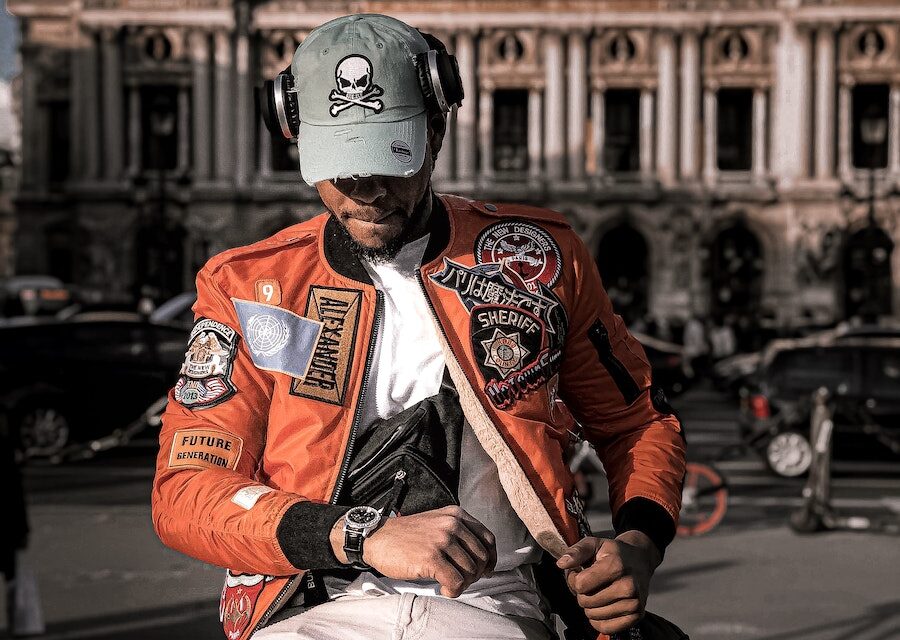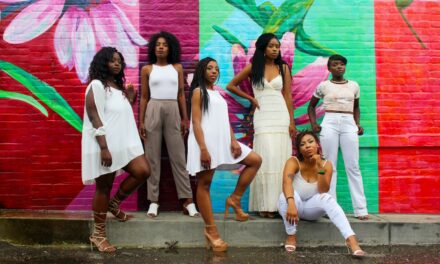Streetwear is a style of casual clothing that has become increasingly popular in recent years. In this article we take a look at how big is the Streetwear Market. What started as a niche trend among skateboarders and surfers has grown into a global fashion phenomenon, coveted by celebrities and worn by people of all ages around the world.
In this article, we will explore the size of the streetwear market, its history, streetwear market trends, if the is the streetwear market growing and its future outlook.
Definition of Streetwear
Streetwear is a style of clothing that emerged in the 1980s from urban youth culture in California. It is characterized by its casual, comfortable design, often featuring bold graphics or typography inspired by skateboarding, graffiti art, and hip-hop music.
Today’s streetwear is often associated with luxury brands and high-end collaborations with designers such as Louis Vuitton or Supreme. While there are no hard-and-fast rules for what constitutes streetwear fashion, there are several key elements that define the style: oversized T-shirts or hoodies; baggy jeans or joggers; sneakers or athletic shoes; caps or beanies; and graphic prints or logos.
Brief History of Streetwear
The roots of streetwear can be traced back to skateboarding culture in Southern California during the late 1970s and early 1980s. Skaters would wear Vans shoes paired with loose-fitting pants and graphic T-shirts featuring artwork from local artists. This laid-back aesthetic soon caught on among other urban youth subcultures such as surfers and hip-hop fans.
In the 1990s, streetwear evolved into a more mainstream fashion trend thanks to influential brands like Stüssy and A Bathing Ape (Bape). These labels blended Japanese-inspired design elements with American street culture influences to create unique collections that appealed to young people around the world.
Today, streetwear has become a billion-dollar industry, thanks in part to collaborations between luxury fashion houses and streetwear brands. This fusion of high fashion and street culture has resulted in highly coveted clothing lines that sell out within minutes of release.
Importance of Understanding how big is the Streetwear Market is
The streetwear market is not just a passing trend but an established industry that is continuing to grow. To understand the size and scope of this market is crucial for a wide range of stakeholders, from designers and manufacturers to retailers and investors.
For designers and manufacturers, having a clear understanding of the size and demographics of the streetwear market can help them make informed decisions about their collections, from design choices to marketing strategies. For retailers, knowing which demographics are most interested in streetwear can help them target their advertising campaigns more effectively.
Investors also need to have an accurate understanding of the size and potential growth of the market when deciding where to put their money. The global expansion of e-commerce platforms has made it easier for new brands to gain traction in different markets around the world.
By understanding these trends, investors can make more educated decisions about where they want to allocate their capital. By exploring what defines streetwear fashion and its history up until today we can understand how big this fast-growing industry really is.
Its influence on pop culture alone shows how significant it has become over time. Knowing how big this trend really is important for anyone involved with manufacturing or selling clothes as well as for those who want an inside knowledge into developing fashion trends around the world.
Overview of the Streetwear Market
Streetwear is a fast-growing fashion industry that has taken the world by storm. It’s influenced by skateboarding, hip-hop, and subcultures such as punk rock.
The streetwear market size has been increasing rapidly over the years due to its unique style and appeal to younger demographics. As per data from Grand View Research, in 2019, the global streetwear market size was valued at USD 185.4 billion and is expected to grow at a compound annual growth rate (CAGR) of 7.8% from 2020 to 2027.
Global market size
The streetwear market has gone beyond being just a niche subculture and has become a dominant force in global fashion. The Asia-Pacific region is currently one of the largest markets for streetwear due to its large population and younger demographics.
China alone accounts for about one-third of the global sales of streetwear apparel and accessories while Japan accounts for another significant portion of global sales. North America is another significant region for streetwear consumption with major players like Supreme, Nike, Adidas, Vans originating from there as well as popular collaborations between luxury brands like Louis Vuitton with Supreme or Off-White with Nike.
Major players in the industry
The popularity of streetwear has led to an increase in new brands entering the market every year making it incredibly crowded but at the same time it continues growing rapidly. Established brands like Nike, Adidas, Puma have generated brand loyalty that help them gain popularity among consumers while other young brands are building their identity on social media platforms like Instagram where they can create engaging content that resonates with their target audience.
Supreme is considered one of the pioneers in this industry having been founded back in 1994 by James Jebbia who started selling clothing out of his skateboard shop in New York. Supreme’s popularity exploded when it started collaborating on limited-edition goods with other brands like Nike, The North Face, and Louis Vuitton.
Key trends shaping the industry
Streetwear is not just a fashion style anymore; it is a cultural movement that is constantly evolving. One of the key trends shaping the industry has been the rise of sustainable and eco-friendly collections from major brands.
As consumers become more environmentally conscious, they look for eco-friendly products that are produced with minimal impact on nature. Another trend that has emerged in recent years is high-end designer collaborations with streetwear brands.
Luxury brands like Gucci and Prada have partnered up with streetwear labels to create exclusive collections making luxury fashion more accessible to younger demographics that crave unique designs that are not available in traditional luxury stores. The streetwear market continues to grow at a rapid pace, driven by its appeal to younger demographics globally.
Major players such as Nike and Supreme continue to dominate this market while new entrants continue to emerge every year bringing their unique styles and innovations to attract consumers. The shift towards sustainability and designer collaborations remains a key trend shaping this industry as its popularity continues to rise.
Demographics and Consumer Behavior
Age and Gender Breakdowns
Streetwear is a fashion trend that has been embraced by people of all ages, although it is most popular among millennials and Gen Z. According to a report by Business Insider, 75% of streetwear consumers are between the ages of 13 and 34. However, what sets streetwear apart from other fashion categories is its strong appeal to both men and women. In fact, a survey conducted by Hypebeast found that 60% of streetwear consumers were male while the remaining 40% were female.
Income and Spending Habits
Streetwear clothing can range from affordable to high-end luxury items, making it accessible to a wide range of incomes. However, it is often associated with luxury brands such as Supreme or Off-White which can be expensive. According to a report by Highsnobiety, the average price for a Supreme item on the secondary market in 2018 was $437.
Despite its association with high prices, streetwear enthusiasts are willing to spend significant amounts on their passion for this fashion trend. The same Highsnobiety report found that almost half (49%) of sneakerheads (a term used for avid collectors and enthusiasts) have spent over $5000 on sneakers in their lifetime.
Social Media Influence on Consumer Behavior
Social media has had a significant impact on consumer behavior within the streetwear industry. Platforms such as Instagram have facilitated the rise of influencer marketing within this space.
Influencers who have built up large followings due to their knowledge and love for streetwear can sway consumer behavior through recommendations or endorsements. Moreover, social media has made it easier than ever before for consumers to discover new brands or items within this space.
Street style photography taken at fashion events such as New York Fashion Week or Paris Fashion Week is often shared on social media, with the clothing worn by influencers creating a buzz around certain items. In turn, this has led to greater demand for these items and has contributed to the growth of the streetwear market as a whole.
Regional Differences in Streetwear Consumption
North America: The Birthplace of Streetwear
North America has long been recognized as the birthplace of streetwear fashion, with iconic brands like Supreme and Stüssy originating from this region. Due to its cultural influence, streetwear is extremely prevalent in North America, particularly in cities like New York, Los Angeles, and Toronto.
In these areas, it’s common to see young people wearing sneakers and hoodies while walking down the street. Despite its mainstream popularity, there is still a strong underground streetwear scene which caters to niche demographics and subcultures.
Europe: A Blend of High-End Fashion and Street Culture
European streetwear fashion is characterized by a blend of high-end fashion and street culture. Countries like Italy and France have been at the forefront of high-end luxury fashion for decades, but in recent years they have also embraced the casual style of streetwear.
Brands like Off-White and A Bathing Ape (BAPE) are now just as popular in Europe as they are in North America. However, European consumers tend to place a greater emphasis on quality and craftsmanship when it comes to their clothing purchases.
Asia-Pacific: Embracing Bold Colors and Graphics
The Asia-Pacific region has become increasingly influential in the world of streetwear fashion over the past decade. Japanese brands like Comme des Garçons have long been recognized for their avant-garde designs, but now Korean brands like Ader Error are also gaining attention for their bold colors and graphics. In China, streetwear has exploded thanks to social media influencers who have popularized the style among young people.
The appetite for limited edition collaborations is particularly strong in this region with demand outstripping supply causing prices to soar on online resale markets. Overall regional differences vary greatly due to cultural, economic and historic factors.
While streetwear is a global phenomenon, each region has its own unique taste and style. It’s interesting to see how streetwear has evolved in different parts of the world while still maintaining its roots in urban culture and hip-hop music.
Niche Subcategories within Streetwear
Sneaker culture
Sneakers have become an essential part of streetwear fashion. Sneaker culture has evolved from being a means of athletic performance to a statement piece that is vital for completing a streetwear look.
Today, some sneaker brands release limited editions that are highly sought after by collectors, with some resale values running into the thousands of dollars. Some popular sneakers among enthusiasts include Air Jordans, Yeezys, and Nike SBs.
Skateboarding fashion influence
Skateboarding has been an integral part of street style since its inception in the 1970s. Skateboards and their associated clothing and accessories have become a significant subculture within the larger streetwear market. Clothing brands such as Vans, Stussy, and Palace Skateboards create skateboard-inspired apparel, which has become highly sought after by followers of this subculture.
High-end designer collaborations
High-end designers have begun incorporating streetwear elements into their collections and collaborating with streetwear brands to reach wider audiences. Designer collaborations such as Louis Vuitton x Supreme or Off-White x Nike have resulted in highly successful collections that bring together two different aesthetics to create something unique.
The Future of Streetwear Market Growth
Emerging markets for streetwear consumption
As interest in streetwear continues to grow globally, emerging markets for this fashion subculture are developing rapidly in regions such as Africa and South America. These markets present significant opportunities for established players in the industry to expand their reach while also providing opportunities for local designers to develop their own unique style.
Sustainability and ethical concerns in production
As consumer awareness regarding sustainability continues to increase globally, it is becoming increasingly vital for companies in the industry to consider the environmental and ethical implications of their production processes. The use of recycled materials, fair labor practices, and eco-friendly manufacturing techniques are becoming more prevalent in streetwear production.
Potential impact of technology on streetwear
Technology is already having an impact on the streetwear market with the use of augmented reality (AR) to enhance the shopping experience. AR technologies enable customers to try on clothing virtually before purchasing, providing a more immersive and personalized experience. It is also possible that emerging technologies such as blockchain could bring transparency to the supply chain, enabling consumers to verify the authenticity and ethical standards of their purchases.
Conclusion
The streetwear market has expanded beyond its origins as a subculture into a global phenomenon. Niche subcategories such as sneaker culture, skateboarding fashion influence, and high-end designer collaborations have transformed this fashion movement into something diverse yet cohesive. While emerging markets present significant growth opportunities for established players in the industry, there are increasing concerns about sustainability and ethics in production.
Technology has already had an impact on streetwear with AR technologies enhancing customer experiences and blockchain potentially bringing transparency to supply chains. Overall, with its creative diversity and potential for innovation, it is clear that this dynamic industry will continue to evolve in exciting ways over time.










